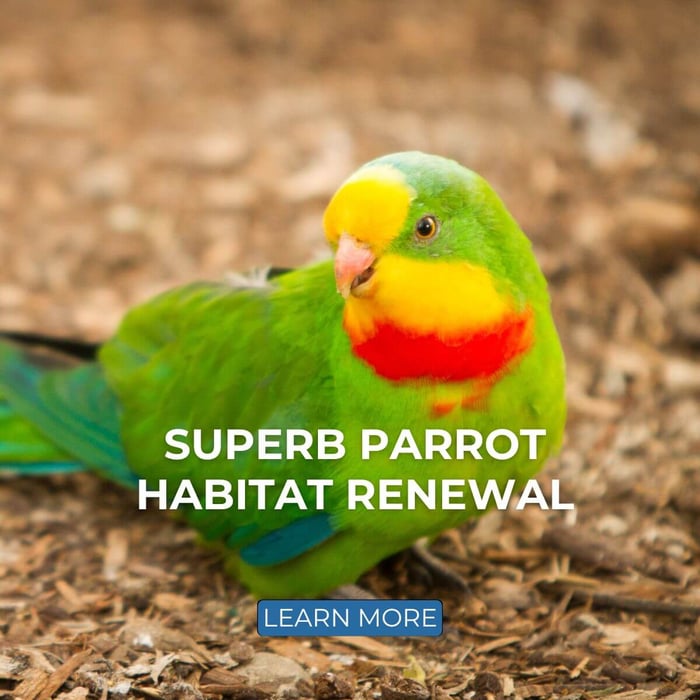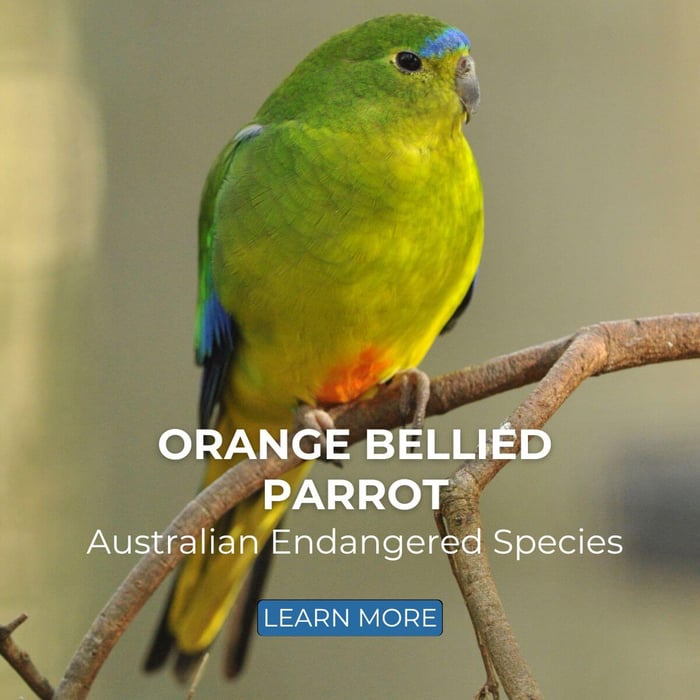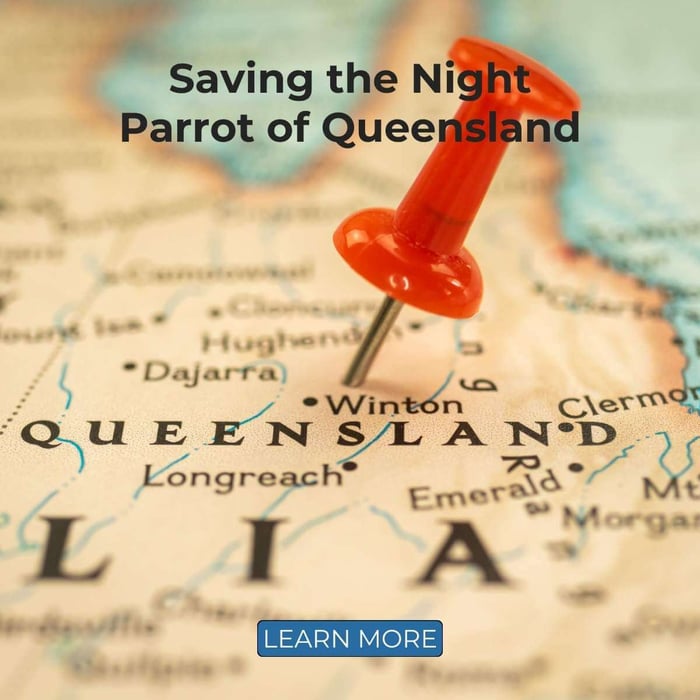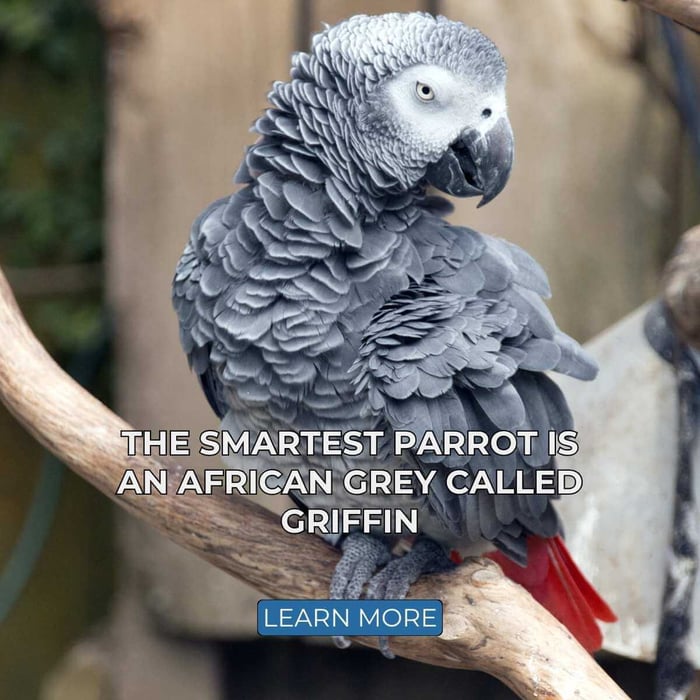Kaka Parrot – Can you teach an old parrot new tricks?
The question of whether you can teach an old dog new tricks is a common one, but what about parrots? Specifically, can the Kaka, a native species of New Zealand, continue to learn and adapt as it ages? Recent research conducted by Julia Loepelt, a student at Victoria University of Wellington, offers fascinating insights into the intelligence and problem-solving abilities of the Kaka parrot. The study focuses on the age-related differences in the problem-solving skills of these birds, providing a glimpse into the cognitive lives of one of New Zealand's lesser-known parrot species.

Kakas: The Forgotten Genius of the Bird World?
When we think of intelligent birds, parrots and crows often come to mind as the "brains" of the avian world. The Kea, another native New Zealand parrot, is famous for its exceptional problem-solving skills. However, its forest-dwelling cousin, the Kaka parrot, hasn't been given the same level of attention—until now. Loepelt's study marks the first time that Kakas have had their cognitive abilities formally tested, shedding light on how these birds learn and adapt to challenges in their environment.
The Study: Testing the IQ of Kaka Parrots
Loepelt's study took place in Zealandia, a wildlife sanctuary in Wellington, where over 100 wild Kaka parrots were tested. The age of the birds ranged from 4 months to 13 years, offering a broad spectrum of data on how age might influence their problem-solving capabilities. The tests were designed to measure the birds' ability to adapt to new challenges, an essential skill for survival in the wild.
Younger Kakas Outperform Their Elders
One of the most striking findings from Loepelt's research is that younger Kaka parrots are significantly more innovative and persistent problem solvers compared to their older counterparts. While older parrots tended to struggle with the tasks, younger birds were quick to find solutions. This suggests that behavioural flexibility—an ability to adapt and try new strategies—is more prominent in younger Kaka parrots.
Experiment One: Block Removal
The first experiment involved a feeder where a wooden block was placed under a treadle plate, preventing the lid from lifting. The challenge for the parrots was to recognise that the block needed to be removed to access the food inside. None of the adult parrots were able to solve this problem. In contrast, more than 40% of the juvenile parrots successfully removed the block and accessed the treats. This experiment highlighted the agility and curiosity of the younger birds, who were more willing to engage with the new and unfamiliar obstacles.
Experiment Two: Lid Opening
In the second experiment, the treadle plate that usually lifted the feeder's lid was removed. The parrots had to figure out that they needed to go around to the side of the feeder and flip the lid manually. Again, the younger Kakas outshone their elders, with more than half of the juvenile birds solving the problem, compared to only one adult bird. This experiment reinforced the idea that younger birds possess a greater ability to explore alternative solutions when faced with new challenges.
Experiment Three: String Pulling
The final experiment involved a cashew nut suspended on a long piece of string. The birds had to pull the string in various ways to retrieve the nut, with some even hanging upside down to solve the problem. Interestingly, this experiment had the highest success rate among all the tests, with all the juvenile birds and more than half of the adult birds managing to retrieve the nut. This suggests that while older Kaka parrots may struggle with certain types of problem-solving tasks, they are not entirely devoid of cognitive flexibility.
What Does This Mean for Kakas in the Wild?
Loepelt's study offers valuable insights into the cognitive abilities of Kaka parrots, particularly regarding how these abilities change with age. The greater behavioural flexibility observed in younger birds likely plays a crucial role in their development, allowing them to learn efficient feeding strategies that they can use throughout their lives. The study suggests that while older Kakas may be less flexible in their problem-solving approaches, they can still learn and adapt, albeit more slowly, than their younger counterparts.
Implications for Conservation and Understanding Avian Intelligence
The findings from this study have important implications not only for understanding Kakas but also for avian intelligence more broadly. The ability to solve problems and adapt to new situations is critical for survival, especially in rapidly changing environments. For conservation efforts, understanding these cognitive differences can help in designing strategies that support both younger and older birds in the wild.
Moreover, this research underscores the importance of considering age when studying animal intelligence. Just as in humans, cognitive abilities in birds appear to change with age, influencing how they interact with their environment. By recognising these differences, researchers and conservationists can better appreciate the complex lives of these intelligent creatures.
Can You Teach an Old Kaka New Tricks?
So, can you teach an old Kaka new tricks? The answer, based on Loepelt's research, seems to be yes—but with some caveats. While younger Kaka parrots are more likely to experiment and find novel solutions to problems, older parrots may need more time and perhaps simpler challenges to adapt to new situations. This doesn't mean older Kakas are incapable of learning; rather, it highlights the natural cognitive changes that occur with age.
In the wild, this difference in problem-solving ability between younger and older birds might influence how Kaka parrots of different ages interact with their environment. Younger birds might be more adept at exploring new food sources or navigating unfamiliar territories, while older birds may rely on established routines and knowledge gained from years of experience.

Conclusion: The Kaka's Cognitive Journey
Loepelt's study is a pioneering step in understanding the cognitive abilities of the Kaka. It not only reveals the impressive problem-solving skills of these birds but also highlights how age can impact their ability to learn and adapt. For anyone interested in avian intelligence or the unique wildlife of New Zealand, the Kaka offers a fascinating case study.
The next time you find yourself wondering about the cognitive abilities of parrots, remember the Kaka. These birds, with their blend of youthful curiosity and age-earned wisdom, demonstrate that while you can teach an old parrot new tricks, it's the younger ones that might just surprise you with their ingenuity.
Whether you're a bird enthusiast, a conservationist, or simply curious about the natural world, the story of the Kaka is a reminder of the rich and complex lives led by these intelligent creatures. And who knows? Perhaps there's still much more we can learn from these clever parrots as they continue to thrive in the forests of New Zealand.
Source: Alison Ballance RNZ




